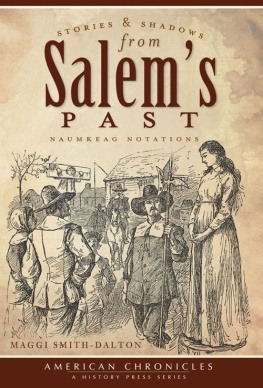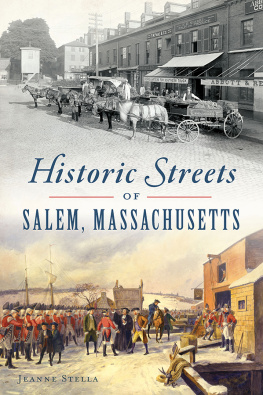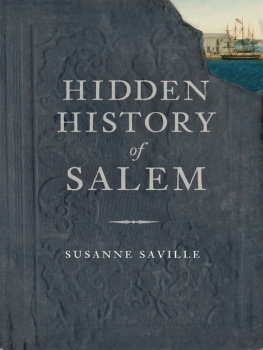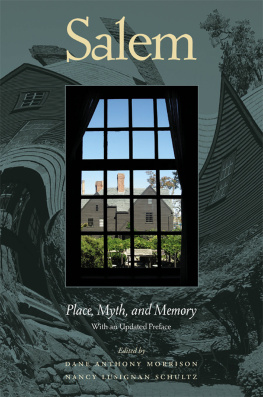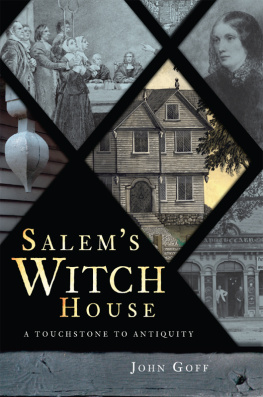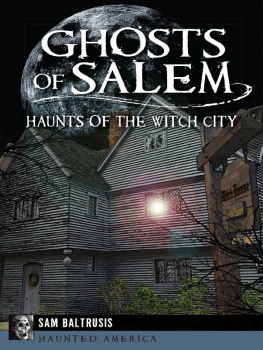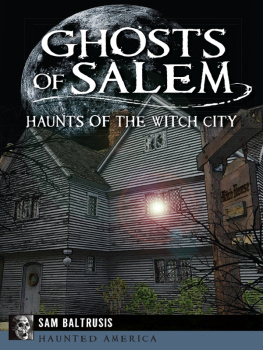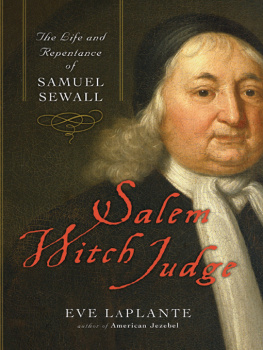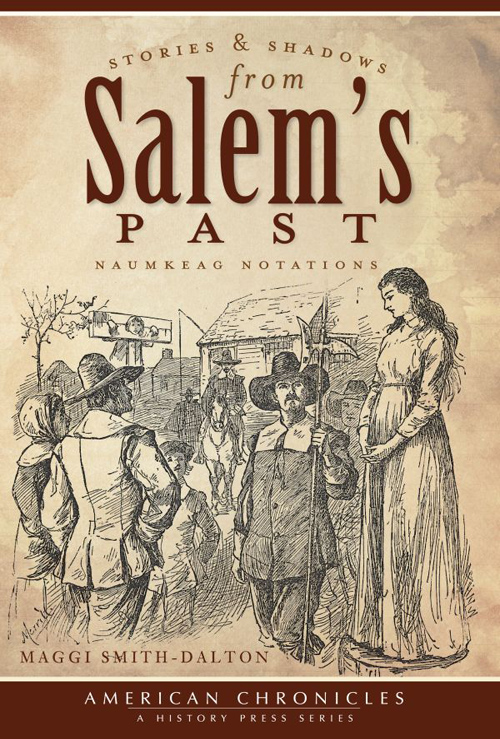
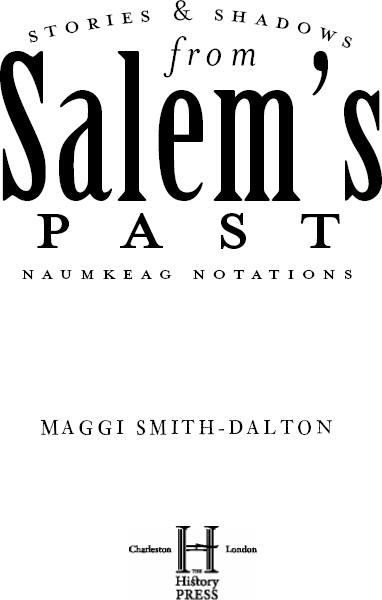
Published by The History Press
Charleston, SC 29403
www.historypress.net
Copyright 2010 by Maggi Smith-Dalton
All rights reserved
Front cover: Illustration by F.T. Merrill in Samuel Adams Drakes A Book of New Englands
Legends and Folk Lore in Prose and Poetry.
First published 2010
e-book edition 2011
ISBN 978.1.61423.015.1
Library of Congress Cataloging-in-Publication Data
Smith-Dalton, Maggi.
Stories and shadows from Salems past : Naumkeag notations / by Maggi Smith-Dalton.
p. cm.
Includes bibliographical references.
print edition ISBN 978-1-60949-017-1
1. Salem (Mass.)--History--Anecdotes. 2. Salem (Mass.)--Social life and customs-
Anecdotes. 3. Salem (Mass.)--Biography. I. Title.
F74.S1S64 2010
974.45--dc22
2010025317
Notice: The information in this book is true and complete to the best of our knowledge. It is offered without guarantee on the part of the author or The History Press. The author and The History Press disclaim all liability in connection with the use of this book.
All rights reserved. No part of this book may be reproduced or transmitted in any form whatsoever without prior written permission from the publisher except in the case of brief quotations embodied in critical articles and reviews.
This book is dedicated jointly to the memory of my father, Edward Joseph Smith, and to my wonderful husband, James B. Dalton.
Contents
Introduction
What could the meeting be about, I wondered?
It was early in the school yearnot even my birthday yetand here was a note from my teacher requesting a meeting with my parents. I couldnt think of anything to be especially worried about; well, I did have that wild crush on the tall, dark and handsome Mr. T. But, I suspected, it had more to do with the shes too serious, too shy, too bookish chorus I was already, by the fifth grade, learning to expect from my teachers. (I never did, and still dont, understand why shyness and a choice not to be a social butterfly was considered to be such a fault.)
When they came home, I couldnt read the looks on their faces. I suspect now, looking back on it, that they literally didnt know what to do. But the news they gave me when they sat me down to have a private talk was so wonderful and exciting that it soon became apparent that I had more reason to hug Mr. T. than any schoolgirl crush would warrant.
Mr. T., my dad said, explained to them that he could offer three choices for my educational future in the fifth grade. As had been suggested to my parents almost every year since I entered school, I could be skipped a grade or two ahead; I could go home for the rest of fifth grade and come back for sixth; or (and here, my dad and mom seemed stunned) I could continue to attend fifth grade and go to math class (ugh), gym (double ugh) and music; and then be dismissed for the rest of the dayto the library. (These were the days before the problematic institution of gifted and talented classes was invented.)
And so it was that every day I was allowed to wanderto wallow inthe wonderful world of books in our school library. I couldnt wait! Each day I paid the math and gym gods their pound of flesh and then hurried, breathless with delight, to the quiet room filled with books. I learned to read widely, deeply and with growing powers of discrimination. I read everything and supplemented it with my usual weekend trips to the town library or haunting the big brown bookmobile when it pulled into our little semisuburban enclave on the New Jersey shore. I had an insatiable curiosity; yet, it was history and nonfiction that sparked my intellectual loyalty. I dreamt of being a history teacher when I grew up.
When I was ten years old, it was discovered that I had serious musical talent and music became my lifes purpose. Music claimed me for its ownan outlet for my passionate nature. (Yes, shy people are passionate!) Yet I have never forgotten my first love; as an adult Ive been able to combine them: I became a professional musician at age eleven, and I began writing my first history, culture, and arts newspaper columns while still in my teens. Its been a long, happy journey since then.
So, Gentle Reader, here are some gleanings from recent columns that are reconstituted as chapters in a book about the historic, startling and often bemusing Salem, Massachusetts, where I landed some seven years ago. Written for the Salem Gazette, a newspaper revived in 2005 as a deliberate celebration of one of the most important newspapers in our regionaland nationalhistory, these Naumkeag Notations wander and wallow in the multifaceted stories and shadows of my hometown. (Salem was originally named Naimcecke, Naumkeag or Naimkecke, which is the original Algonkian name for the harbor on which our maritime community would take root.)
I wish to earnestly thank all the folks who granted interviews, inspired curiosity, gave me advice and shared their research with me through these past few years. I especially thank my beloved husband and musical partner, Jim; my cherished colleague, historian Robert Booth; Bill Woolley and Lisa Guerriero, my editors at the Salem Gazette; and, of course, I thank my fifth-grade teacher, Mr. T., wherever he is!
Maggi Smith-Dalton, bookish musician and tuneful historian
Summer 2010
Chapter 1
People
DISTINGUISHED FOR GENIUS
MUSICAL MR. MCINTIRE
Architectureis frozen music.
Friedrich von Schelling (17751854), the Philosophy of Art
Architecture[is] silent music.
Johann W. von Goethe (17491832)
Congregation requested to rise during performance.
The following Lines sung as a Tribute of Respect to Mr. Samuel McIntire,
the Sunday after his Interment.
Few are our daysthose few we dream away;
Sure is our fate to moulder in the clay.
Rise, immortal soul, above thine earthly fate;
Time yet is thine, but soon it is too late
Rise, immortal soul, that hence thy fame may shine,
Time flies and ends, eternity is thine.
Manuscript in the collection of the Phillips Library, Peabody Essex Museum
Where the Woodcarver of Salem now sleeps his eternal sleep, his memorial proclaims him distinguished for Genius in Architecture, Sculpture and Musick: Modest and sweet Manners rendered him pleasing: Industry and Integrity respectable.
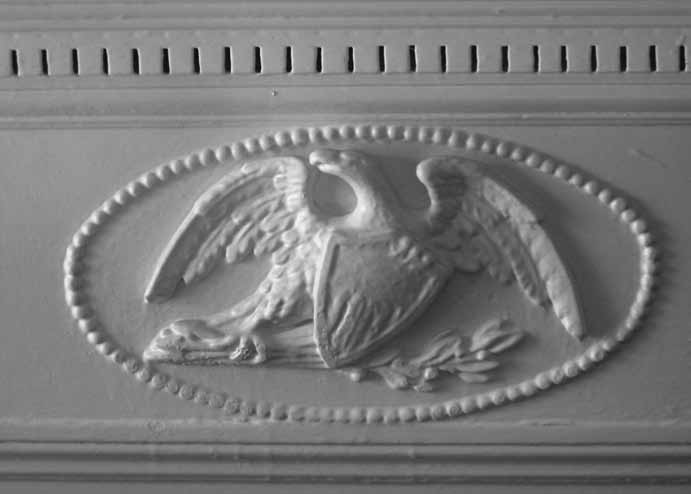
An eagle carved by Samuel McIntire, dated circa 1807, on a Salem mantelpiece. The author thanks Dean Lahikainen, Carolyn and Peter Lynch Curator of American Decorative Artt the Peabody Essex Museum, for his kind assistance in dating this work of art. Courtesy of author.
It is intriguing to note that architect and master carver Samuel McIntire was baptized in Salem in January 1757, the year in which a young George Washington began remodeling and enlarging his Mount Vernon home. Washington facilitated its restructuring from old into new, guided by his own talent for architecture. Washington was as conscious of the important statement his home made to the world as he was of his role in remodeling the political structure and identity of his native land.

